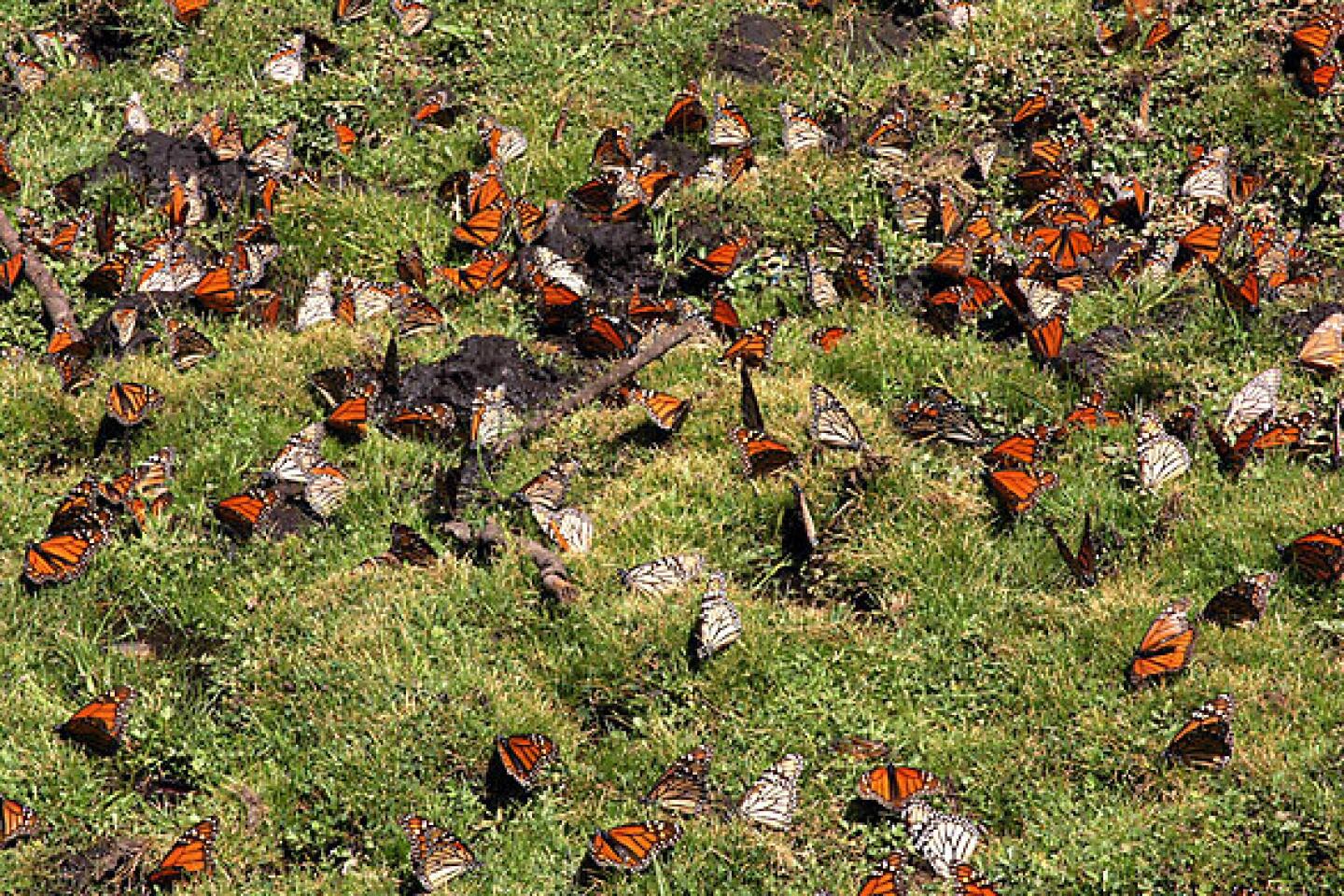Mexico’s butterfly reserve alights in the soul
They first catch the eye as tiny, ghost-like flashes. It takes a moment to fix the flitting shapes.
You have come to these highland woods to see a natural marvel. The sparse, darting forms are not quite that. But they silently summon you deeper with the suggestion that this is just the start.
They are butterflies, and for a few months a year they convert the hills here into a wonderland of fluttering movement and color.
Millions of the orange-and-black monarchs travel from the United States and Canada each winter to reach this rural corner of Michoacan state, in southwestern Mexico.
It’s hard to imagine such a fragile-looking creature weathering an arduous trip of more than 2,700 miles. Yet here they are: camouflaged on the leaves of bushes, clinging in thick bands on branches, tossed freely on the mountain breezes.
In coming weeks, they’ll head north again, another hard journey. For the moment, they are ours to behold -- an embodiment of the mysteries of migration and of survival against many odds.
The monarchs’ winter home is a few hours’ drive from the din of Mexico City, but a world apart. Steep hills, draped in evergreen and oak, rise above rock-studded fields, where cattle and goats graze alongside tiny streams.
Hand-lettered signs in Ocampo, the nearest town, guide you to a stone-paved road that winds upward to the butterfly sanctuary, perched 10,000 feet above sea level on an ejido, or communal farm, known as El Rosario.
El Rosario’s residents watch over this section of the Monarch Butterfly Biosphere Reserve, which spills into the neighboring state of Mexico.
No one is sure why the butterflies keep coming back here. One theory holds that the monarchs are able to identify the spot by the bodies of their predecessors. That’s why it is forbidden to pick up dead monarchs.
It is also forbidden to cut trees, but illegal logging and deforestation remain the main threats to the habitat.
Environmentalists sound warnings and federal authorities make sporadic arrests, but illegal cutting has been hard to wipe out.
The butterfly park at first looks more like the midway of a county fair than a nature reserve. A paved path from a sprawling parking lot leads past rows of merchants, who hawk handicrafts, tacos and sodas from dozens of wooden lean-tos. The tang of frying oil overwhelms the scent of pine and there seem to be more monarchs painted on coffee mugs than in actual flight.
But the commercial zone ends and a dirt path ascends sharply beneath the broken canopy of 100-foot-tall trees.
By midmorning on this Saturday, the crowd on the trail is growing thick: school groups and bus tourists, huffing grandmothers, paunchy dads and sweating teens toting walking sticks.
It’s a hide-and-seek game to spot the butterflies that hang, closed-wing and motionless, from the underside of russet leaves. They can also be seen flying in the dappled light, but not nearly in the show-stopping volume I was expecting. Vague disappointment begins to creep in as we near the top of the trail, where the forest opens onto a meadow. Did we pick the wrong day?
Then they appear.
Butterflies. Everywhere. The monarchs swirl about haphazardly, like snowflakes in a flurry. On the ground, they cluster to form a soft fringe around a spot where water has pooled in the prickly grass.
Grown-ups are turned instantly into children. They look up, wide-eyed and grinning, and point cellphone cameras at the darting specks. Some people break into a sprint, flailing joyously at butterflies they have no hope of catching. But that is not the point.
We plop down on a rise at the edge of the meadow and take in the magical tableau. The 6-year-old puts it as a question: “We’re here to enjoy nature, right?”
Around us, monarchs by the thousands dance like embers in the choppy wind. On a sunny day in Mexican winter, this place surely belongs to the migrants.
More to Read
Sign up for Essential California
The most important California stories and recommendations in your inbox every morning.
You may occasionally receive promotional content from the Los Angeles Times.















